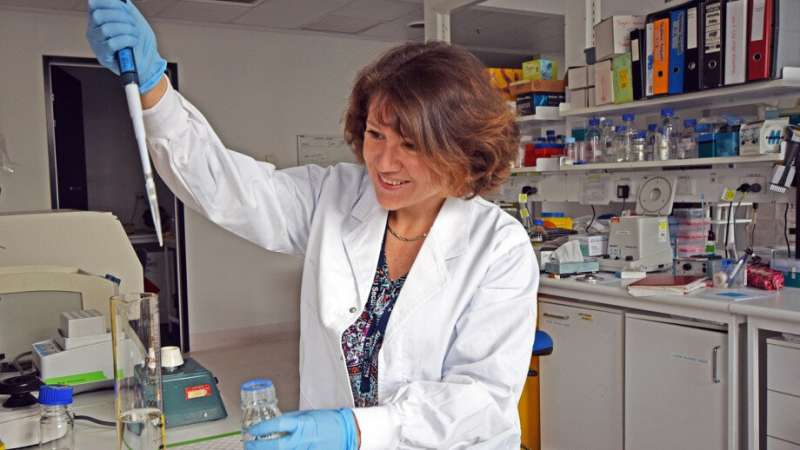DNA regulator offers new hope for Hodgkin lymphoma treatment

Researchers at The Australian National University (ANU) have discovered how a DNA-binding protein sustains Hodgkin lymphoma.
The world-first discovery has the potential to help treat the rare cancer with the development of therapeutics that target cells once they become cancerous. The findings are published in EMBO Reports.
Approximately 800 Australians are diagnosed with Hodgkin lymphoma per year. The disease causes cancer in white blood cells, called lymphocytes, in men and women of any age, but young people in particular.
The research team discovered the histone protein, H2A.B that is normally active only in the testes and the brain, becomes abnormally activated in lymphocytes, stimulating conditions that sustain Hodgkin lymphoma.
Lead researcher Dr. Tanya Soboleva, from the ANU John Curtin School of Medical Research (JCSMR), said the discovery could hold the key to better health outcomes for thousands of patients globally.
"H2A.B. is an incredibly powerful protein. It binds to DNA and controls it in multiple ways including activation of genes that are known to promote cancer," Dr. Soboleva said.
"Histone proteins like H2A.B can package two meters of DNA into a cell that is only 20-micron in diameter. That is the same as a packing a rope that is the diameter of a football field into a football.
"With H2A.B being active, the DNA packaging becomes less tight, making DNA more susceptible to the activity of cancer-driving proteins.
"In our study, we found that H2A.B becomes abnormally activated in all types of Hodgkin lymphoma and we have found the mechanism by which H2A.B drives cancer. Essentially, the protein stimulates cells in such a way that they grow and divide more readily.
"This is the first time it has been shown how a testis- and brain-specific protein can drive cancerous processes when it becomes active in the wrong cell type.
"Now that we have identified this protein and the role it plays in making cells cancerous, we think we can target it to stop this from happening.
"For example, our study shows that when we deplete H2AB quantities in Hodgkin lymphoma cells grown in a flask in the lab, the cells stop growing well."
The research team has just been awarded a grant from Cancer Council ACT to examine how targeted therapeutics could stop H2A.B making cells cancerous.
"Our discovery is really exciting. For the first time, we have the opportunity to target H2A.B only within Hodgkin lymphoma cells and spare all other cell types in our body," Dr. Soboleva said.
"Most cancer therapeutics aren't currently able to do this.
"Besides new hope for those who suffer from Hodgkin's lymphoma, these therapeutics could also work for those suffering other types of lymphoma and breast cancer."
More information: Xuanzhao Jiang et al, H2A.B is a cancer/testis factor involved in the activation of ribosome biogenesis in Hodgkin lymphoma, EMBO reports (2021). DOI: 10.15252/embr.202152462















